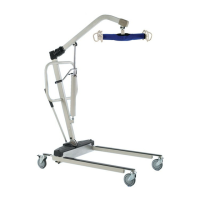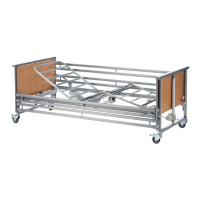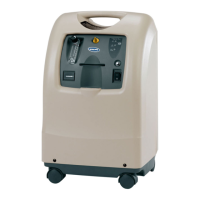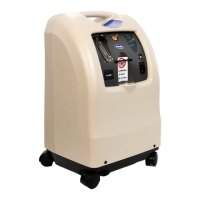Maintenance
1.ChargethebatteryuntiltheLEDturnsgreen.
2.Removethehandcontrolfromthecharger.
3.Raiseandlowerthestrapswithaloadforoneminute.
4.Waittenminutes.
5.RepeatSteps3–4untilthebatteryiscompletelydischarged.
Continuethisprocessaftertheaudiblealertsoundsand
thebluelightflashes,indicatingthebatteryislow.
6.RepeatSteps1–5twotothreetimes.
4.2.1StorageCharacteristics
Essentiallyallrechargeablebatterycellsgraduallydischargeovertime
whethertheyareusedornot.Thiscapacitylossistypicallydue
toslowparasiticreactionsoccurringwithinthecell.Assuch,the
lossrate(self-dischargerate)isafunctionofthecellchemistryand
thetemperatureenvironmentexperiencedbythecell.Duetothe
temperaturesensitivityoftheself-dischargereaction,relativelysmall
differencesinstoragetemperaturemayresultinlargedischarges
whicharedifficultorimpossibletoreverse.Cellandbatterystorage
issuesofconcerntomostapplicationdesignersrelateeithertothe
speedwithwhichthecellslosetheircapacityafterbeingcharged
ortheabilityofthecellstochargeanddischarge“normally”after
storageforsomeperiodoftime.Inbothsituations,generalguidelines
developedfornickel-cadmiumcellsworkacceptablyfornickel-metal
hydridecells.
4.2.2StorageTemperature
Asalreadymentioned,theself-dischargereactionrateincreaseswith
highertemperatures.Prolongedstorageofthebatterymaterial
deterioratingfaster;leakageperformancewillalsodeteriorate,
resultinginareducedbatterylifetime.Itisrecommendedthat,for
longstorage,batteriesshouldbekeptatroomtemperatureorbelow
(0-30°Cor32–86°F).
4.2.3StorageTime
Asthebatterylosesenergyduringstorage,thevoltagealsodrops.In
general,thebatterycapacitylossduetoself-dischargeduringstorage
canberecoveredbyrecharging.Ifthebatteryisstoredforoversix
months,itisadvisabletocyclethebatteryseveraltimestoresume
thebatterycapacity.Usegoodinventorypractices(firstin,firstout)
toreducetimecellsspendinstorage.
4.2.4StorageHumidity
Leakageandrustingofmetalpartsareacceleratedinhigh
humidityenvironments,especiallythosewithcorrespondinglyhigh
1586747-A
21
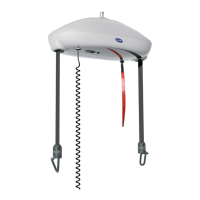
